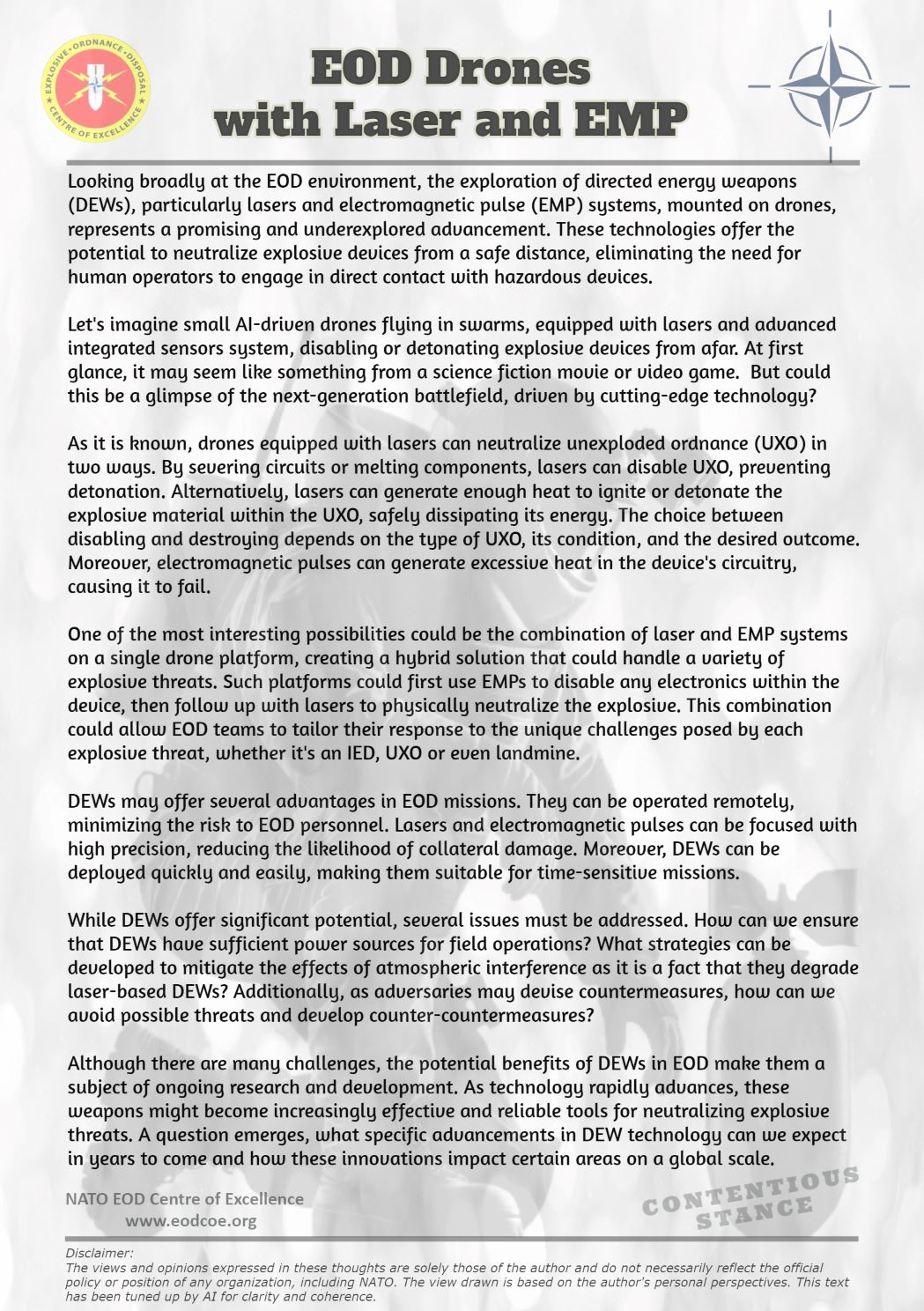
EOD Drones with Laser and EMP
Looking broadly at the EOD environment, the exploration of directed energy weapons (DEWs), particularly lasers and electromagnetic pulse (EMP) systems, mounted on drones, represents a promising and underexplored advancement. These technologies offer the potential to neutralize explosive devices from a safe distance, eliminating the need for human operators to engage in direct contact with hazardous devices.
Let's imagine small AI-driven drones flying in swarms, equipped with lasers and advanced integrated sensors system, disabling or detonating explosive devices from afar. At first glance, it may seem like something from a science fiction movie or video game. But could this be a glimpse of the next-generation battlefield, driven by cutting-edge technology?
As it is known, drones equipped with lasers can neutralize unexploded ordnance (UXO) in two ways. By severing circuits or melting components, lasers can disable UXO, preventing detonation. Alternatively, lasers can generate enough heat to ignite or detonate the explosive material within the UXO, safely dissipating its energy. The choice between disabling and destroying depends on the type of UXO, its condition, and the desired outcome. Moreover, electromagnetic pulses can generate excessive heat in the device's circuitry, causing it to fail.
One of the most interesting possibilities could be the combination of laser and EMP systems on a single drone platform, creating a hybrid solution that could handle a variety of explosive threats. Such platforms could first use EMPs to disable any electronics within the device, then follow up with lasers to physically neutralize the explosive. This combination could allow EOD teams to tailor their response to the unique challenges posed by each explosive threat, whether it's an IED, UXO or even landmine.
DEWs may offer several advantages in EOD missions. They can be operated remotely, minimizing the risk to EOD personnel. Lasers and electromagnetic pulses can be focused with high precision, reducing the likelihood of collateral damage. Moreover, DEWs can be deployed quickly and easily, making them suitable for time-sensitive missions.
While DEWs offer significant potential, several issues must be addressed. How can we ensure that DEWs have sufficient power sources for field operations? What strategies can be developed to mitigate the effects of atmospheric interference as it is a fact that they degrade laser-based DEWs? Additionally, as adversaries may devise countermeasures, how can we avoid possible threats and develop counter-countermeasures?
Although there are many challenges, the potential benefits of DEWs in EOD make them a subject of ongoing research and development. As technology rapidly advances, these weapons might become increasingly effective and reliable tools for neutralizing explosive threats. A question emerges, what specific advancements in DEW technology can we expect in years to come and how these innovations impact certain areas on a global scale.